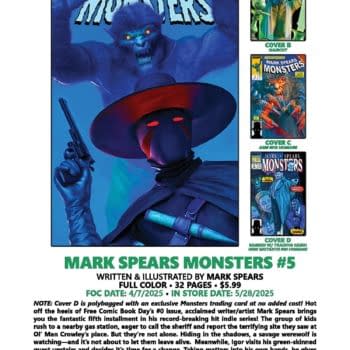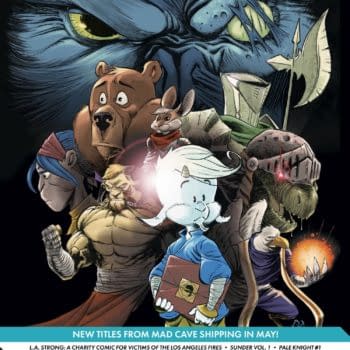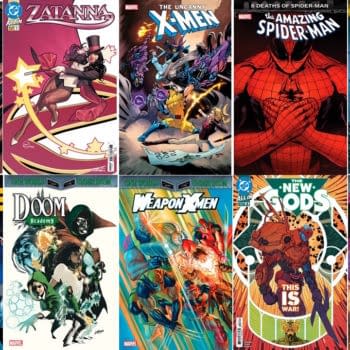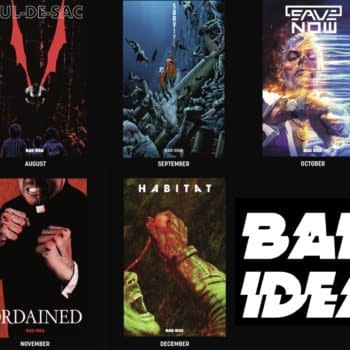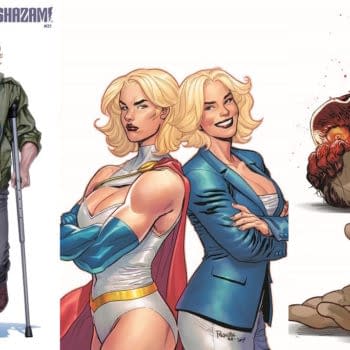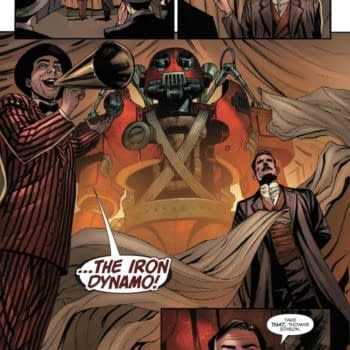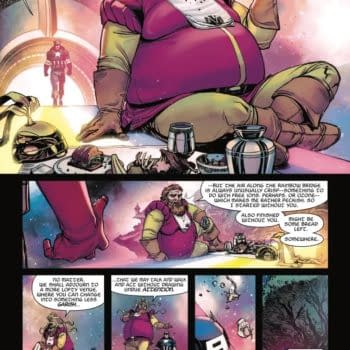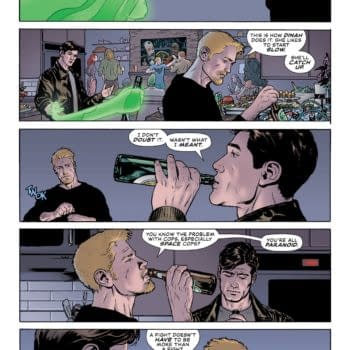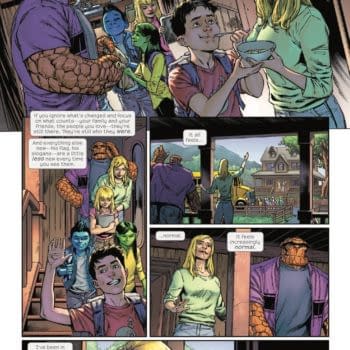Posted in: Comics | Tagged: Comics, kickstarter
Attack Of The Killer Word Balloons! – And Why Artists Should Study Silent Storytelling
Maybe we think it's just not important. As an artist I know that a person already has a lot to juggle as he or she draws. Things like anatomy, perspective, clothing, composition, color, and line quality are all difficult enough to master. Can't we leave the storytelling to the writers? I would answer 'no'. Our job is not to merely decorate someone else's words; we must partner with the writer to breathe life into the story! We should strive to make an audience believe our characters are really alive, with their own personalities, thoughts and emotions. We need to become actors as well as artists.
And that's where studying silent storytelling can really help.
When you take away the dialogue in a scene, the only way an actor can communicate is visually. He must use his face and body to their fullest potential, translating his thoughts and feelings into physical actions. He must show instead of tell, and that's always more interesting and engaging for an audience. After all, scientists tell us that 90% of human communication is non-verbal. And it's what silent film actors excel at.
I'm not saying we don't need words to tell great stories. There's absolutely nothing wrong with dialogue in and of itself. In fact, writers are the very backbone of any storytelling medium and deserve a lot more credit than they get. But as artists we need to be careful not to let the script do all of the storytelling for us. When we take that attitude we settle for stiff acting and clichéd poses. Our drawings may be anatomically accurate with dazzling line work, but they will be emotionally stale without any real power to communicate. Instead of infusing our characters with expressive personality and depth we will merely make eye candy to fill up the space between word balloons.
I realize this can be a challenge. The natural tendency is to focus on the external aspects of our characters (anatomy, clothing, etc.). It's much harder to capture internal aspects like personality, thoughts, and emotions. Yet those are the qualities that people relate to. They make a connection with an audience and cause them to care. Actions really do speak louder than words.
Every artist who works in a storytelling medium – whether its animation, comics, children's books, or even video games – should study silent acting. If you draw comics, study some of the dialogue-free stories of Will Eisner. Do you love comedy? Take a look at Mr. Bean. If drama is your thing, check out the recent Oscar-winner The Artist. In animation there's Wall-E and The Triplets of Belleville. Watch them over and over. Study their poses and expressions. Really look at what actors are saying with their body language. Notice how many thoughts can be communicated with just a look.
As you study, put what you see down on paper. Open your sketchbook and try to capture those same attitudes and poses. Pretty soon you'll have a wealth of ideas that you can draw from whether your scene has dialogue or not. Your drawings will be richer, your characters will have more life, and your audience will be more entertained.
You can also use my new Kickstarter, the Pose Drawing Sparkbook. It's a great tool designed to help you add more life and personality to your drawings. It's like acting exercises for your sketchbook. To promote the project I'm giving away a free download of 100 SketchBook ideas, no strings attached. Enjoy!








